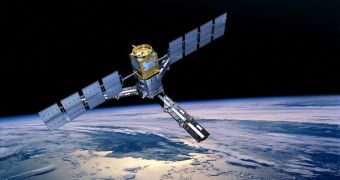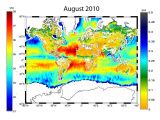Today marks a very special event for the European Space Agency (ESA), which announces the one year anniversary since the launch of the advanced Earth Explorer Soil Moisture and Ocean Salinity (SMOS) satellite.
The Earth-observing spacecraft is the most sensitive of its type ever built, and it can provide ultra-precise measurements of the global level of moisture inside soils, as well as measure the concentrations of various chemicals inside the world's oceans.
All of this helps climatologists and planetary scientists get a better understanding of Earth's water cycle, which is very important for efforts to better manage and conserve existing resources.
ESA says that the satellite has been in operations for just six months. The first half-year in orbit was spent commissioning the mission, analyzing all systems, and conducting calibrations measurements.
The satellite was launched together with the small technology demonstration satellite Proba-2, aboard a SS-19 Rokot delivery system, which is in fact a converted intercontinental ballistic missile (ICBM).
Take off took place on November 2, 2009, from the Plesetsk Cosmodrome in northern Russia. SMOS is part of the ESA Earth Explorer program, which will contain a total of 8 satellites once completed.
This particular mission got off to a bumpy start, as the frequencies on which SMOS was supposed to communicate with Earth – and which were reserved for the satellite – were being pirated by unauthorized radio, TV, and communications signals.
ESA had to search each individual source, and eliminate them one by one, by urging respective governments to clamp down on the illegal emitters. Once the frequencies were clear, the mission began sending back a flood of data.
“From monitoring drought and floods down to the soil conditions that lead to locust hatching, SMOS is fulfilling all our expectations and more,” says of the soil moisture datasets Centre d'Etudes Spatials de la Biosphere expert Yann Kerr.
“Further availability of the data will open up new research areas, paving the way to new successes,” the expert goes on to say.
“It has been a really exciting 12 months. With the excellent performance of the SMOS instrument we now have the challenge of improving the models and processes to provide more accurate data for sea-surface salinity,” adds Jordi Font.
“Nevertheless, I am convinced that SMOS will mark a milestone in the history of ocean remote-sensing,” adds the expert, who is based at the Spanish Research Council's Institut de Ciències del Mar.

 14 DAY TRIAL //
14 DAY TRIAL // 
